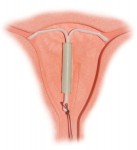Mirena Lawsuit Alleges IUD Migration Led to Multiple Complications
 A plaintiff has filed a new Mirena lawsuit in Chicago, claiming she has experienced multiple Mirena side effects since she was first implanted with the device. Although the IUD was surgically removed, she allegedly continues to suffer from pain, impairment, and a diminished quality of life. The plaintiff in this complaint further asserts that she had no knowledge of the risks of serious side effects associated with the device, including IUD migration, until after she had experienced her complications.
A plaintiff has filed a new Mirena lawsuit in Chicago, claiming she has experienced multiple Mirena side effects since she was first implanted with the device. Although the IUD was surgically removed, she allegedly continues to suffer from pain, impairment, and a diminished quality of life. The plaintiff in this complaint further asserts that she had no knowledge of the risks of serious side effects associated with the device, including IUD migration, until after she had experienced her complications.
Spontaneous perforation of the uterus cited in complaint
The plaintiff, Brooklynn Hayes, filed her Mirena lawsuit in U.S. District Court in the Northern District of Illinois on February 19, 2013. In the complaint, Hayes states she had the Mirena IUD inserted in May, 2008, at the Will County Health Department in Joliet, Illinois. The procedure was without incident, and later tests showed the IUD was properly inserted into Hayes’ uterus with no complications at the time.
In April, 2010, Hayes sought medical attention for severe pain in her lower abdominal region. After undergoing diagnostic testing, it was discovered that Hayes had suffered perforation of the uterus and migration of the IUD. The device was surgically removed, which required hospitalization and ongoing medical treatment and monitoring. To this day, Hayes claims she continues to suffer from bodily impairment and pain from her Mirena IUD complications.
Mirena lawsuit number continues to grow
Hayes is not the first to file a Mirena lawsuit after experiencing serious complications with her IUD. The device, manufactured by Bayer, was first approved by the FDA in 2000 as a birth control method. The T-shaped device is inserted into the uterus by a medical practitioner, where it releases a steady dose of a prescription medication used as a contraceptive. The IUD is designed to remain in place for up to five years, at which time the first device must be removed and a new one inserted.
In recent years, women have begun to report serious side effects with the Mirena IUD, including perforation of the uterus and migration of the device out of its original position in the uterus. These complications can result in severe pain, bleeding, and the need for surgical removal of the IUD. Mirena side effects may last long after the device is removed, and some women are unable to have children after using the device. Women who have undergone previous surgery involving the uterus, such as a C-section or abortion, are at higher risk for these complications.
The Mirena IUD label packaging does warn against migration of the device, but only in circumstances where the uterus is perforated during the insertion procedure. The warning does not alert patients to the possibility of spontaneous migration, where the IUD changes position long after the device is inserted. However, this is precisely what some women are alleging has happened, including Hayes. She claims that her IUD perforated her uterus and migrated nearly two years after the original insertion procedure.
As a result of her injuries, Hayes is now seeking economic, special, and punitive damages from Bayer, in addition to declaratory relief. She joins dozens of others across the country who are now bringing legal action and seeking compensation for their own injuries linked to the Mirena IUD.

